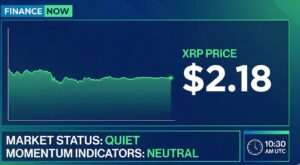Metanet became a new development in the Bitcoin world, gaining popularity recently. Metanet is essential for Bitcoin to function smoothly and without issues due to its complex and abstract nature. It is a system that runs on Bitcoin and continues to operate by Bitcoin. It’s like a Bitcoin-protected version of Internet 2.0.
What Is Metanet?
The value-based internet based on the Bitcoin SV ledger is the Metanet. The Metanet can refer to either the Metanet Protocol or the idea of a value-based internet based on Bitcoin SV.
The METANET is a data storage network built on the Bitcoin blockchain that also acts as “a protocol for structuring the on-chain internet.” In simple terms, it creates data structures from Bitcoin transactions that can be used for storing, transferring, and authorizing information.
Metanet aims to establish a more efficient and capable public ledger-based Internet that can function as a valuable network. These aims are driven by the limitations and shortcomings of the current Internet infrastructure.
Core Principles Of Metanet
Metanet’s motivations link to common issues with the current internet and e-commerce. These issues include:
- Dependence on third-party entities for conducting financial transactions.
- There is no granular micropayment layer.
- Applications that are confined within a specific environment and data that is isolated from other systems and commonly referred to as walled-garden applications and data silos.
- Users have concerns about the privacy and ownership of their data as well as the frequency of spam, trolling, and bots on social media platforms.
The METANET PROTOCOL
The Metanet protocol is a method of organizing data in the on-chain internet framework of Metanet. The Metanet protocol employs a graph data model to establish on-chain data structures for Metanet use cases, applications, and websites. In addition, users can store, distribute, and monetize their data using the protocol’s built-in permissions framework.
The Metanet protocol is a protocol for data structures operating on graphs. The protocol uses the underlying Bitcoin SV ledger’s inherent directed acyclic graph (DAG) data model. This creates overlay DAG structures that natively exist within the ledger’s own structure. However, digital signatures and transactions create edges between vertices that have a direction, unlike an acyclic graph.
The Bitcoin SV network can solve the problems of payment intermediaries and the absence of micropayments. The Metanet intends to address outstanding concerns by merging internet payments with unchangeable data saved on the public ledger of Bitcoin SV.
Using the Bitcoin SV ledger as a universal source of truth for both payments and data has the potential for a more fair internet ecosystem.
Conclusion
A ground-breaking innovation called Metanet uses Bitcoin SV to power a value-based internet. Metanet is an efficient and open ecosystem because it can work around the problems with the present internet infrastructure. Metanet prepares the foundation for the next stage of digital transformation by giving people control over their data and facilitating frictionless transactions




























